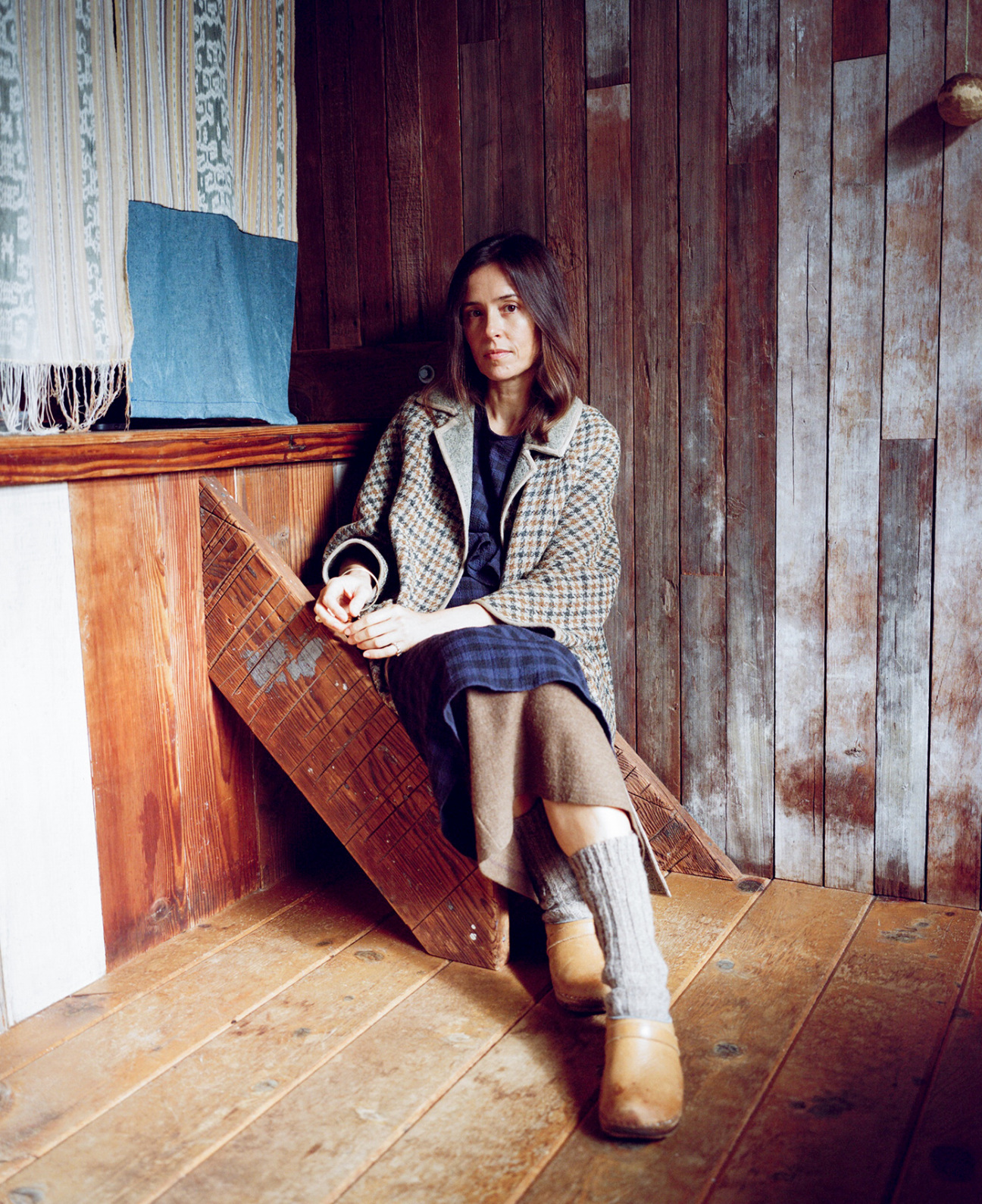
Wood is one of the most versatile and idiosyncratic materials used to make objects. But how has its application evolved over time—both functionally and stylistically—and what are the current trends that define wood craft?
I recently spoke to Mariah Nielson, the daughter of famed, late American wood sculptor JB Blunk, who manages his estate and curates the associated platform Blunk Space. We chatted about her father’s legacy of working with salvaged redwood and her experience living inside one of his creations, as well as her favorite galleries from which to source the most unique works in wood.
What comes to mind when you think of the inherent qualities of wood that make it such a special material for object making?
The time embedded in the material, the age of the tree, the warmth of the material, the tactility, the softness, the grain, the surfaces. I’m particularly thinking more about the softness of it—just because I've been working with stone, and there's obviously such a major difference there. And depending on the scale of what you're working with, there's so much character within a trunk or a burl or a branch, and all of that can affect the way you're working with the wood or what you're making.
Because it's a finite material, wood has a reputation of being precious, but there's so much salvaged wood available. So I would encourage anyone who's interested in working with wood to look into the places around where you live where trees are salvaged. Anyone can go there and buy the material for very little money. It's not a material that I think needs to be tiptoed around or considered inaccessible. There's so much interesting salvaged wood available, and what's really exciting is being able to work with material at such a large scale without worrying about where the wood was originally sourced from.
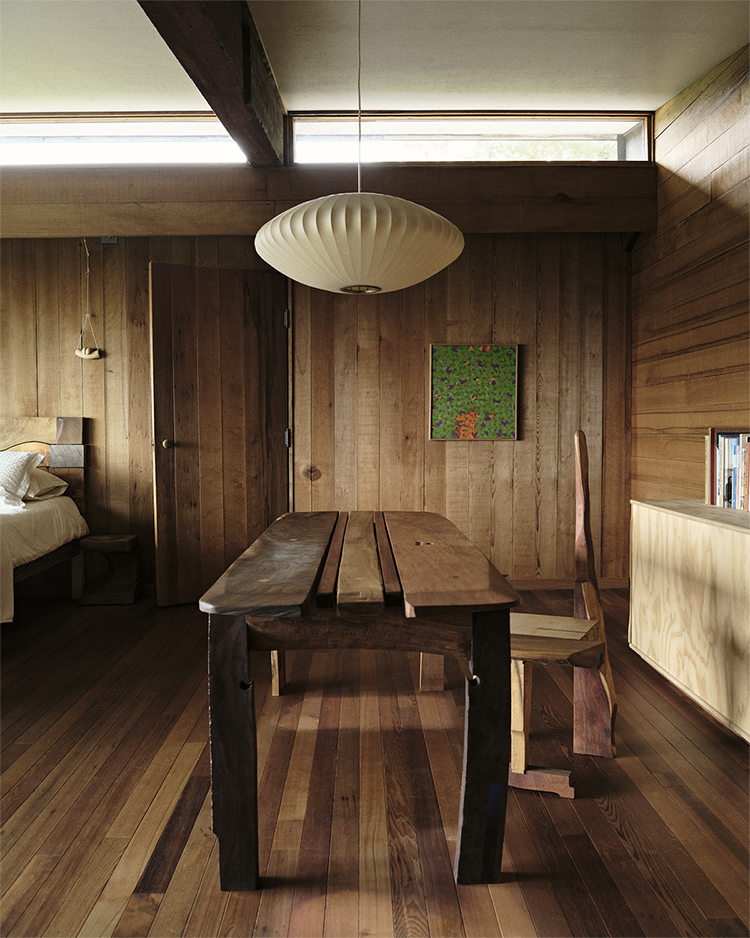
How do you feel woodworking has evolved as an art form throughout history? What's changed, and what's endured?
Again, because it's becoming a finite resource, there's more appreciation for the natural or inherent qualities and character in the wood itself. So there's less woodwork and design that's being made from very precisely milled wood—I'm thinking specifically of California, what's happening here is very different from what's happening in Europe, just because of the wood that's available. Here we’re leaning back into what was happening in the 1960s and '70s, which was more of a sculptural approach to working with wood and honoring the qualities and the idiosyncrasies within the raw material itself, versus wanting to work with very pure, very clean milled redwood, elm, oak, or similar.
If you look at Europe or other parts of the world where there isn't so much old-growth, large-scale wood available, the designers I know there work with the wood they can access. But still, I think there's more of a sculptural inclination within the work that's being made.
Who do you consider to be the most formative wood artisans, and how did they move forward woodworking as an art form?
My father JB Blunk’s use of salvaged redwood for his furniture, sculptures, and home pushed wood across art, craft, and design boundaries, and elevated and expanded preconceptions of the material. He used redwood burls that were considered waste to create sculptures, stools, and his own home. Giuseppe Penone’s fascination with trees and wood has resulted in some of the most stunning sculptures. I appreciate the way he approaches woodworking: scientific, curious, and humble. He said: "…revealing and following the material [wood] is the most fascinating and thrilling thing in my work." I'm especially drawn to Louise Nevelson's work and the way she assembled and transformed pieces of painted wood. When first looking at her work, it's unclear what material she used to create the dense compositions. Her work touches on the transformative qualities and malleability of wood as a material.
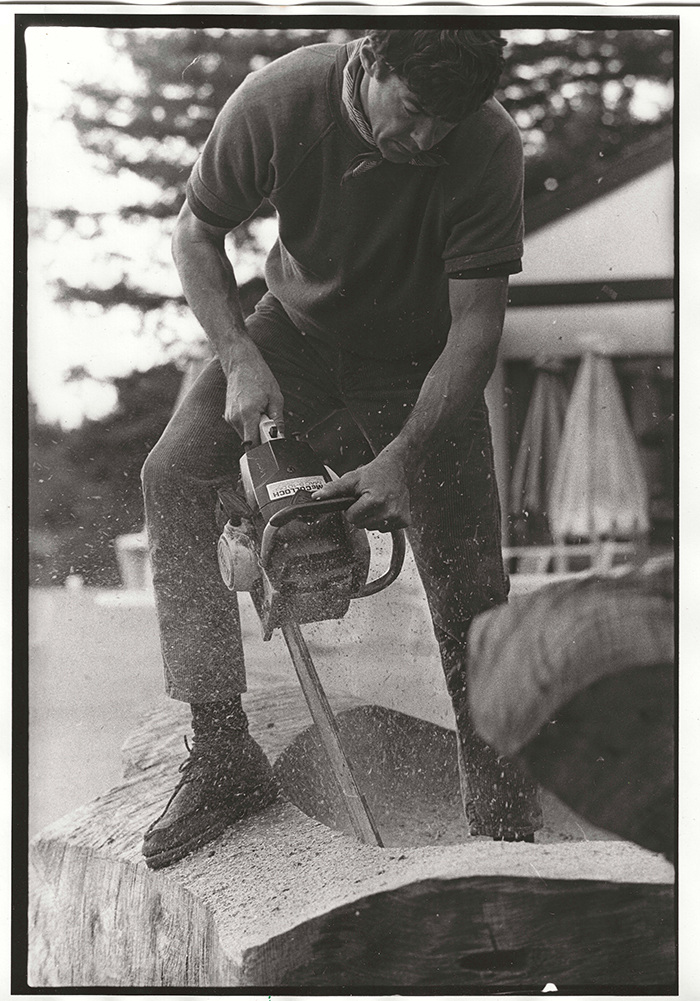
Is there a historic period or movement of woodcraft that you're particularly drawn to or inspired by?
Because of my father and his legacy, I'm probably most interested in what was happening in the 1960s, with the craft revival in the U.S. “Objects USA” [a traveling museum show from 1969] is a really excellent example of that. If you look at that original catalog, the range of artists and designers, craftsmen and women working with wood was so fantastic. Exquisite turned-wood bowls that look like they're made of glass or even ceramic, just so fine, so beautiful, and then scrappier work by artists who were doing more assemblage-like pieces with wood—the freedom, curiosity, and playfulness of the work from the '60s really set the foundation for a lot of the trends or ways of working in wood that we're seeing now.
I totally agree. And can you think of a specific object or collection that you're particularly drawn to?
Actually, there’s a book published in 1973 called Handmade Houses, A Guide to the Woodbutcher’s Art that comes to mind, because every single home in this book is handmade from wood—most of them from salvaged wood—and every single one is like a living sculpture. There was so much as possible at that time in terms of what you could build and what you could use, and there was so much salvaged wood readily available.
And you live in one of these! What are the nuances of daily life there?
The house feels alive. You can feel the energy of the wood in the home. It's soft, it's welcoming, it's intimate. And everyone who visits this home—you've been here!—feels something when they enter, like they're being held or met by something. It's also so dynamic: The temperature changes, the smell changes. I can feel the house expanding and contracting on wet and hot or dry days, depending on the seasons, and it is a lot of work to maintain. In the winter, there are leaks we're chasing and repairs that need attention. You have to live in a way that demands constant engagement and connection. But I think that's really special, and I value that because it means you're connected to the environment that you're living in. You're not just moving around blindly or without regard to the space that you're inhabiting. And you're responsible for it.
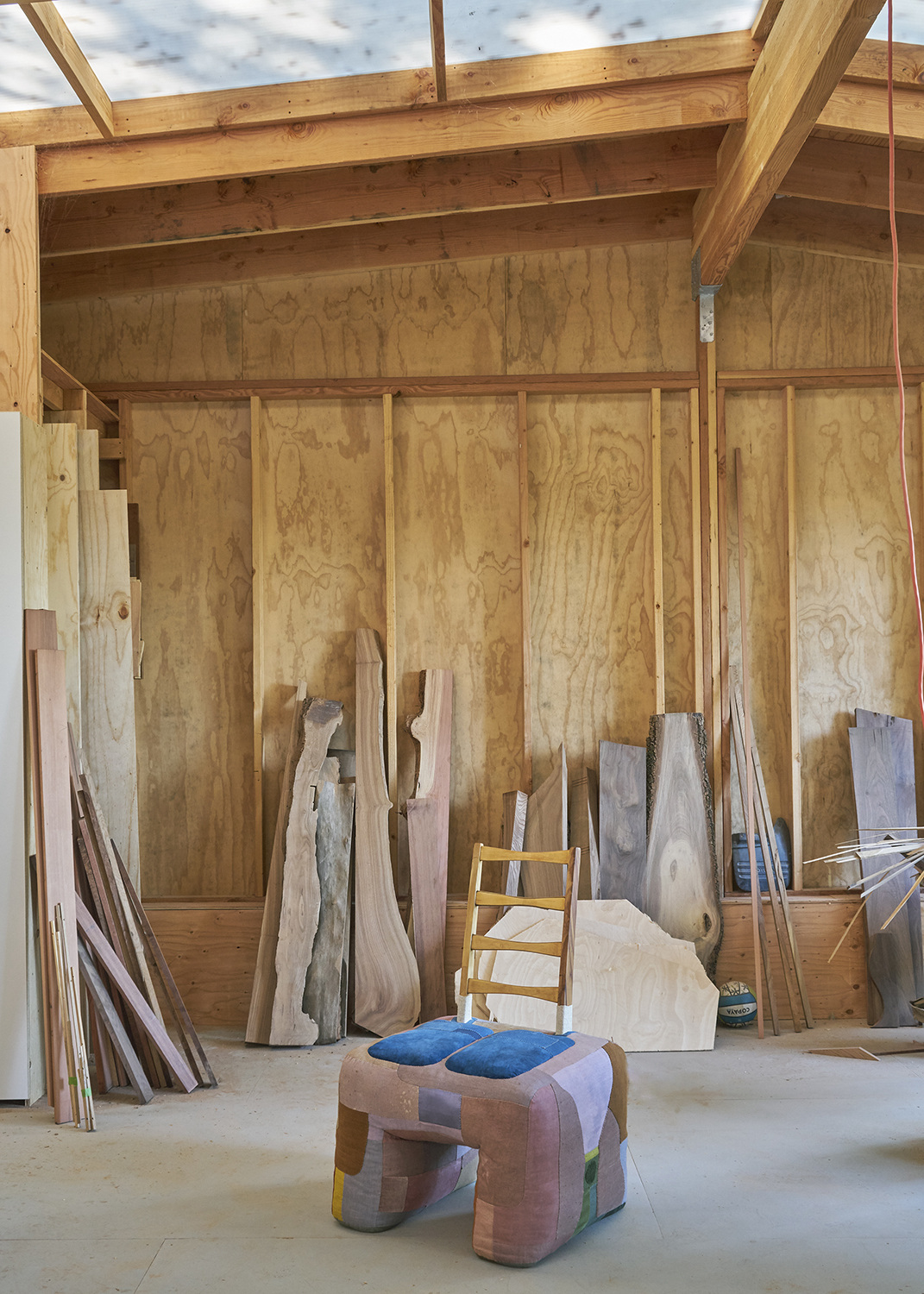
Is there a specific part of the house or a detail that you find yourself constantly drawn to?
My father carved a sink with a counter out of a single piece of cypress wood in 1974, and that’s where I brush my teeth every day. It's a part of our daily routine yet it's an exquisite sculpture, and it's held up so well over the years. There’s also the iconic scrap wall nook that he also built in ‘74. He used all of the redwood offcuts from a larger seating installation that he had made for the Oakland Museum of California in 1968, which he kept knowing he'd do something with them. It's like a full-scale sculpture painting that we are able to appreciate every day.
Have you noticed any new technologies or tools applied to woodworking that feel different or important?
Last Design Miami, [curator] Glenn Adamson put together a panel about the legacy of craft in the U.S. There were about five of us curators on the panel, and we were talking about how craft has changed, and specifically the introduction of technology to the process of making and into studio practices. I'm not anti-technology—I think we need to appreciate all of the tools that are being introduced now. But it's about a balance. I'm not personally drawn to work that is hyper-machine-made or produced, but I do appreciate the way that, for example, Alma Allen works, where there's a combination of machine and hand. I really love visiting artists and designers who are excited about different ways of making and different tools that could be introduced to their practice.
When working with such a tactile, formative material, seeing the hand in there is always very nice. Do you have a favorite variety of wood?
Oaks are my favorite standing trees, I just love the way they look and I think they're so beautiful. But in terms of processed wood, or felled wood, or wood that you could work with, definitely redwood. The smell of it, the color, the softness.
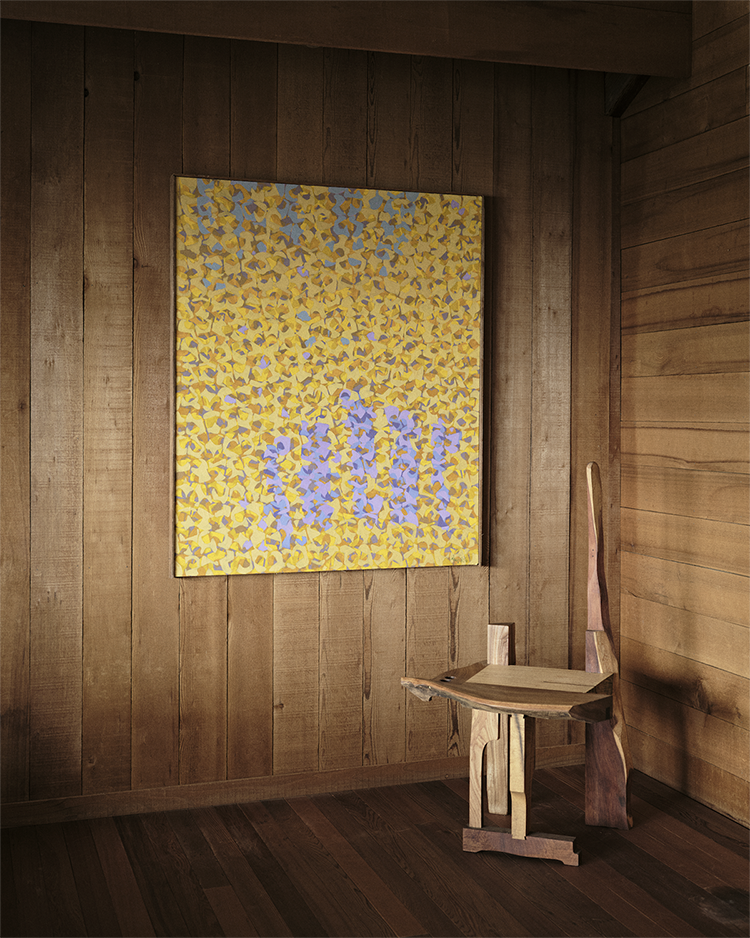
Can you give me an example of a designer working in wood whose work you admire at the moment?
I did just spend time with Rafael Triboli, who had a wonderful exhibition with AGO Projects at Anthony Meier Gallery, and I appreciate the way that he's working with wood from the Brazilian rainforest. I had questions about how he sources the wood, but apparently, if the wood is certified, it's been salvaged versus logged. He's able to work with really large-scale hardwoods from Brazil, and he's carving it in a way that my father would carve redwood, just because of the scale of the wood that he has available. When you first look at Rafael’s work, it looks really precise and clean. But then once you hone in on a piece, you notice that there's actually loads of imperfections, and you can see literally how hard it was for him to carve into it. There’s all these grooves and marks and corners, and you just feel that he was kind of wrestling with that material in the process of making it. And I love that there's an engagement and exchange there between the maker and the wood.
Who are the other woodworkers creating today are you most excited about or inspired by?
Rio Kobayashi, Max Lamb, and Julian Watts. Yikes! All men…
And where should wood enthusiasts look for unique works to source or collect?
Sarah Myerscough, FUMI, AGO Projects, Marta. And I’m not sure if this is appropriate, but Blunk Space too!










 in your life?
in your life?

